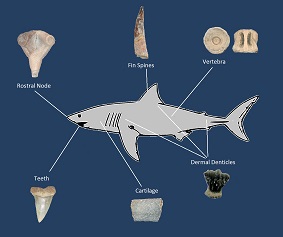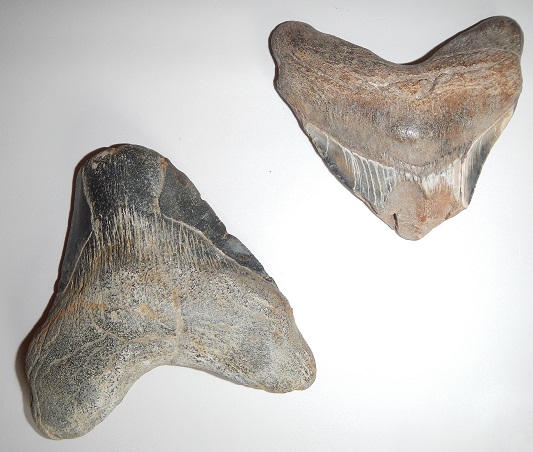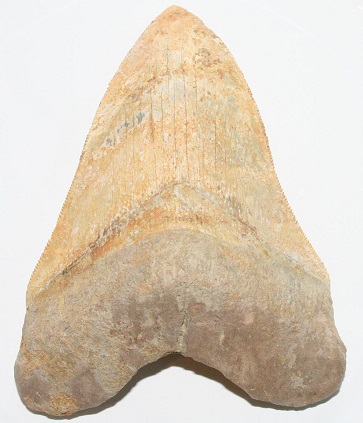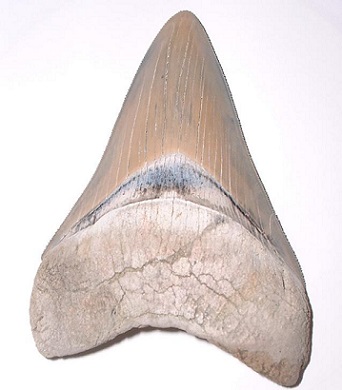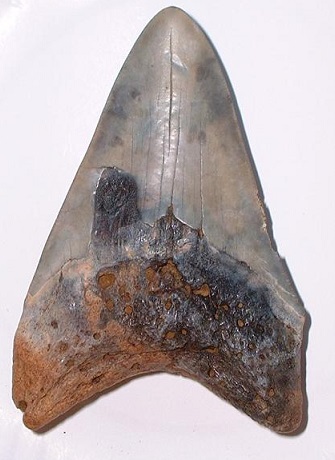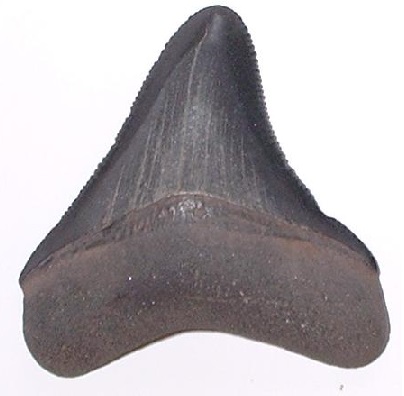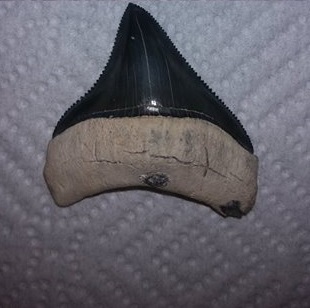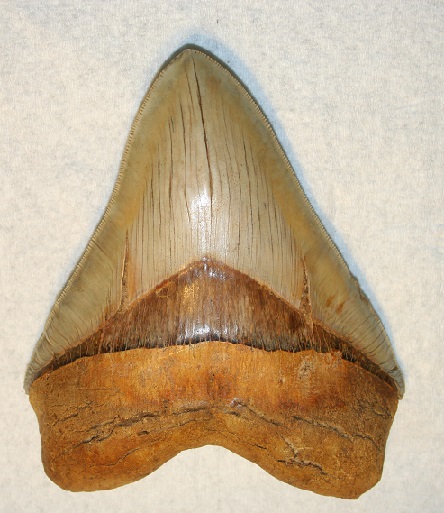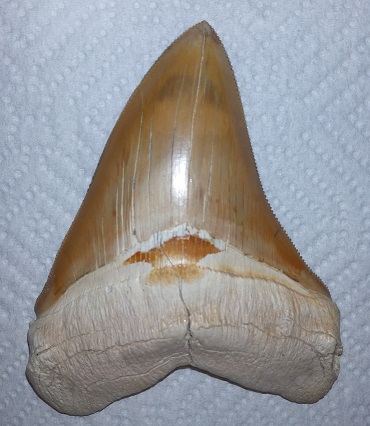Megalodon Shark Facts
What is megalodon? A Megalodon, scientific name Otodus(carcharocles) megalodon, is a massive prehistoric shark that dominated the oceans as the apex predator from the Miocene until the Pliocene. Fossil teeth of the awesome predator are highly prized by collectors especially when large and in excellent condition.
How Big is a Megalodon
Megalodon was the biggest shark to ever swim the oceans, there is no doubt about that. How big did the megalodon actually get though, were there one hundred foot monsters out there swallowing whales whole? There weren't one hundred foot megalodon sharks swimming around out there but there very well could have been some sixty plus footers swimming around during their couple million year existence. We can say this with a little scientific certainty based on studies done on large modern sharks and their tooth to body length ratio. Although never an exact science it can be quite effective until we find an articulated one, verts and all. Until then we need to stick with the best estimate of an 9-10 feet per inch of teeth, scalling downwards on the higher end of the size spectrum.
The modern great white, based on modern catches and sitings maxes out at a little over twenty feet. On average, a megalodon would measure in at thirty feet and max out around a staggering sixty plus feet. A shark of this size would make a snack out of our largest great whites and swallow a human diver whole.
 Comparison of a 60' maximum size megalodon shark with a 20' great white and a 6' human diver.
Comparison of a 60' maximum size megalodon shark with a 20' great white and a 6' human diver.Megalodon Teeth
So, the big question always is, how big is a megalodon tooth, or what's the maximum size of a megaldon tooth? The true answer is that we really don't know, there could be a monster sitting out there unreported and some of those being reported could be exaggerated in size. With that in mind we can for sure say that there are teeth in the 7.25" slant height range and probably bigger out there. Despite the max known size for the teeth being over 7" the average world wide is probably around three to four inches. And the smallest, tiny baby megalodon teeth which are sweet to find.
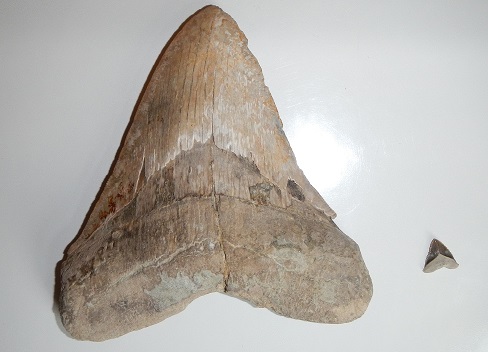
A just under 6" megalodon tooth along side a just over half inch baby tooth.
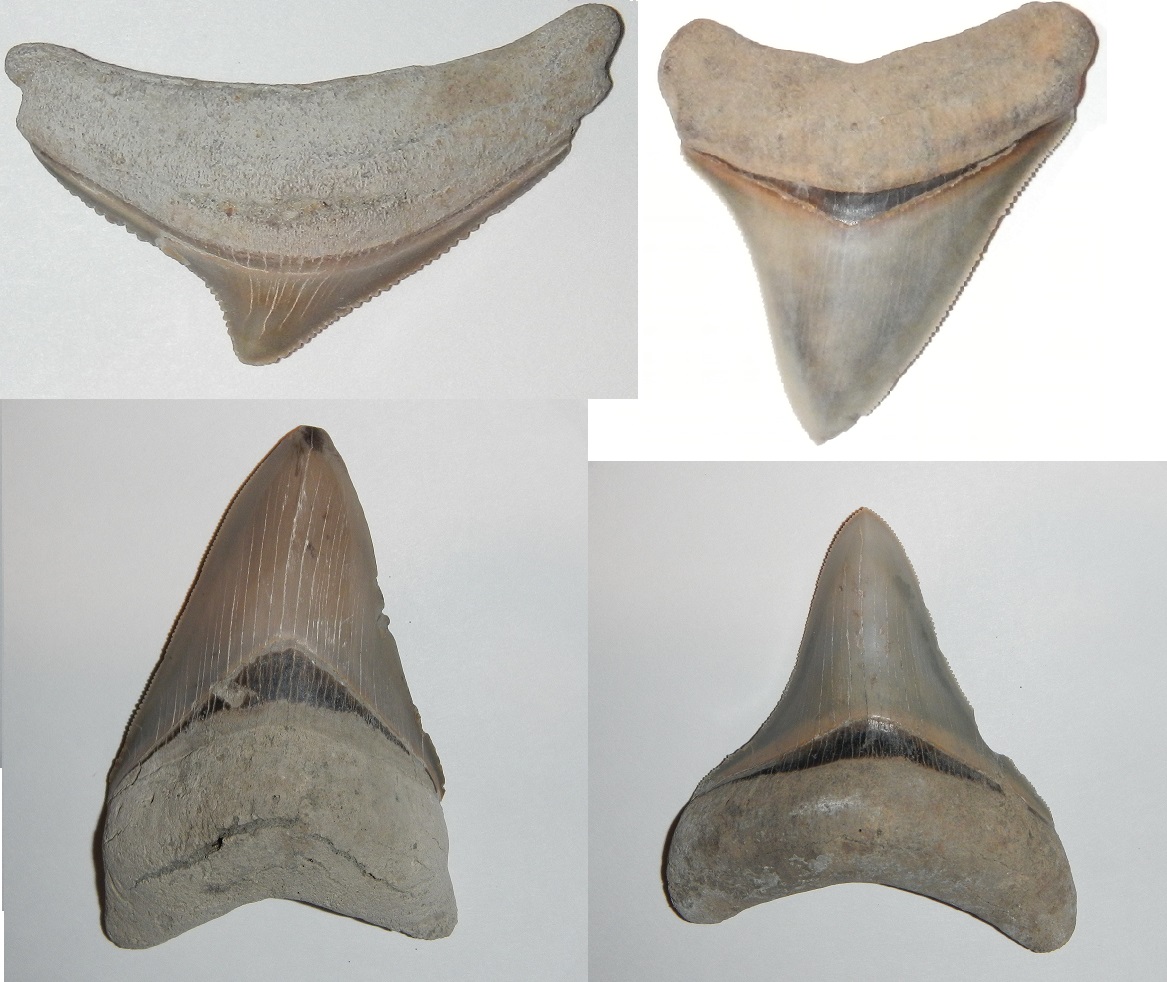
L to R starting at the top. Posterior Tooth, Upper lateral tooth,
lower anterior tooth, lower lateral tooth. Upper anterior shown below

What Did Megalodon Eat
What was the diet of this super predator, what did the megalodon shark eat? Well the short answer, what ever it wanted. Just like the modern great white the megalodon was most likely an opportunistic hunter, killing and eating when hungry. Just like many extant species of shark such as tigers and great whites, megalodons for sure had favorite hunting grounds for particular animals. They most definatly stalked whale migration routes, with adult megalodons reaching in at fifty foot plus, their diet surly included large whales. Just like some extant species, megalodon most likely lurked below in the shadows and stiked fast looking to make mortal wound on first contact. In order to protect from damage caused by a thrashing animal it would most likely circle around until the animal bleeds out. This behavior has been seen in modern whites sharks.
When megalodons feed, things got a little messy. Without hands to grab with, sharks must take a big bite and shake their head side to side, it is times like this that sharks loose a great deal of teeth. With such a large animal exerting so much force through sharp steak knives, short work was made of bones and other tissue. This can be seen in the below photos which are of whale skull fragments with shark bites. You can clearly see the serrations marks in the bone as well as the 'S' pattern from where it shook its head.
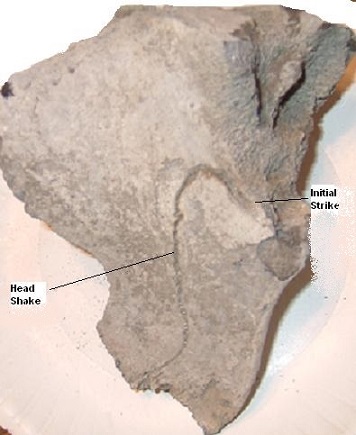 |
 |
| You can clearly see the impact of the tooth and then the head shake from this megalodon shak bit on this whale skull from the lee creek mine Aurora NC | Another piece of the same skull with bite marks |
A lot of times when sharks feed they damage their teeth. The tooth in the picture above most likely got away with just some tip damage, if not It's doubtful the 'S' would be there. On other occasions when impact with bone is made teeth can be damaged heavily by breaking.
While these animals are feeding a lot of stress is being placed on the teeth and they frequently come out. When this occurs there are a few things that can happen. First the tooth can just sink down to the ocean floor, hopefully to be covered up and become a fossil. The other option is it gets caught up in the act of feeding. It's caught in a chunk of whale flesh or lodged between some of the other teeth getting damaged in the process. Sometimes the tooth escapes with some minor serrations scraps on it while other times it gets sheared in half by another tooth.
Where Can You Find Megalodon Shark Teeth
There are a few things going for you if you want to find megalodon shark teeth. First, fossil megalodon shark teeth can be found all around the world, the only continent they have yet to be found on is Antartica. Second, shark teeth are one of the most abundant fossils in existence and in all relativity fossil megalodon shark teeth are not rare. With enough persistence one can find one and where the is one there are more. In areas where marine sediments from the Miocene and early Pliocene are exposing, fossil megalodon shark teeth are eroding out. These teeth have been found sticking out of cliff faces, washing around on a beachs, laying on the bottom of rivers or oceans, sitting out in quarrys or hiding away in little creeks. Depending on the minerals in the area where the tooth is found also helps dictate its colors. This allows for a nice color variation amongst megalodon teeth. Below are a few fossil megalodon shark teeth from various locations
Why is Megalodon Extinct
Is megalodon still alive? Is the title here not why is megalodon extinct? No, it is not still alive, megalodon went extinct a little over 2.5 million years ago. A study of the fossil record shows fossil remains of the megalodon shark are no longer found after this time. It would be highly unlikely for a species to make such an abrupt change to it's life style which would cause their fossils to not be found anymore. Even if they did migrate to and were hiding out in the deepest trenches of the oceans their bodies would come up from time to time, giant squid carcasses had been found for years before one was ever seen.
Why did megalodon go extinct? There are plenty of theories floating around out there but the fact of the matter is that we don't know, and quite frankly probably will never know. We can imagine north and south America bridging together and changing ocean currents as well as closing off easy access from the mid pacific to the mid atlantic. You can talk about the emergence of killer whales on the scene which out competed the megalodon shark for prey. You can even throw in the emergence of the modern great whites, all of the theories are good, but they are just theories. For instance, how would closing off easy access between oceans detrimentaly impact a global predator, sure currents and migration patterns could change but this genus has show the ability to adapt to such changes and still thrive for well over 50 million years, why would this time be any different.
The emergence of killer whales does sorta coincide with decline of the megalodon. One can also take into account the recent videos that have been captured of killer whale pods turning over great whites and killing them. It is quite clear that at some point during evolution some part of the killer whale community figured this out and has passed it along generation after generation. Is it possible that this technique was used to hunt megalodon into extinction, did the hunter become the hunted? In my mind it is extremely unlikely, adult megalodons would have feed on killer whales and juvinlies might have as well, i'm doubtfull a killer whale would go for a thirty foot shark. If whales were to blame, then why are there any great whites left, they have existed with them since before the extinction of the megalodon. Also, some of the biggest badest whales in the archaeocetes co-existed with megalodons ancestors and they did not out complete or hunt them to extinction.
Most of the proposed ideas that we have heard so far in relation to why the megalodon shark went extinct are well founded and could be feasible. Then again, most if not all of those can easily be countered as to why it probably didn't impact the genus of super shark. For all we know it could have been a disease that cause the megalodon shark to go extinct. As much as I would love to see one of these things swimming around, for us boaters out there, it is a good thing that megalodon went extinct.

